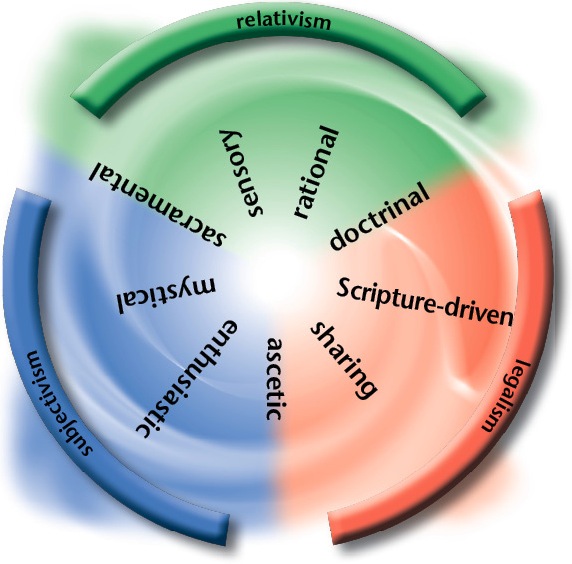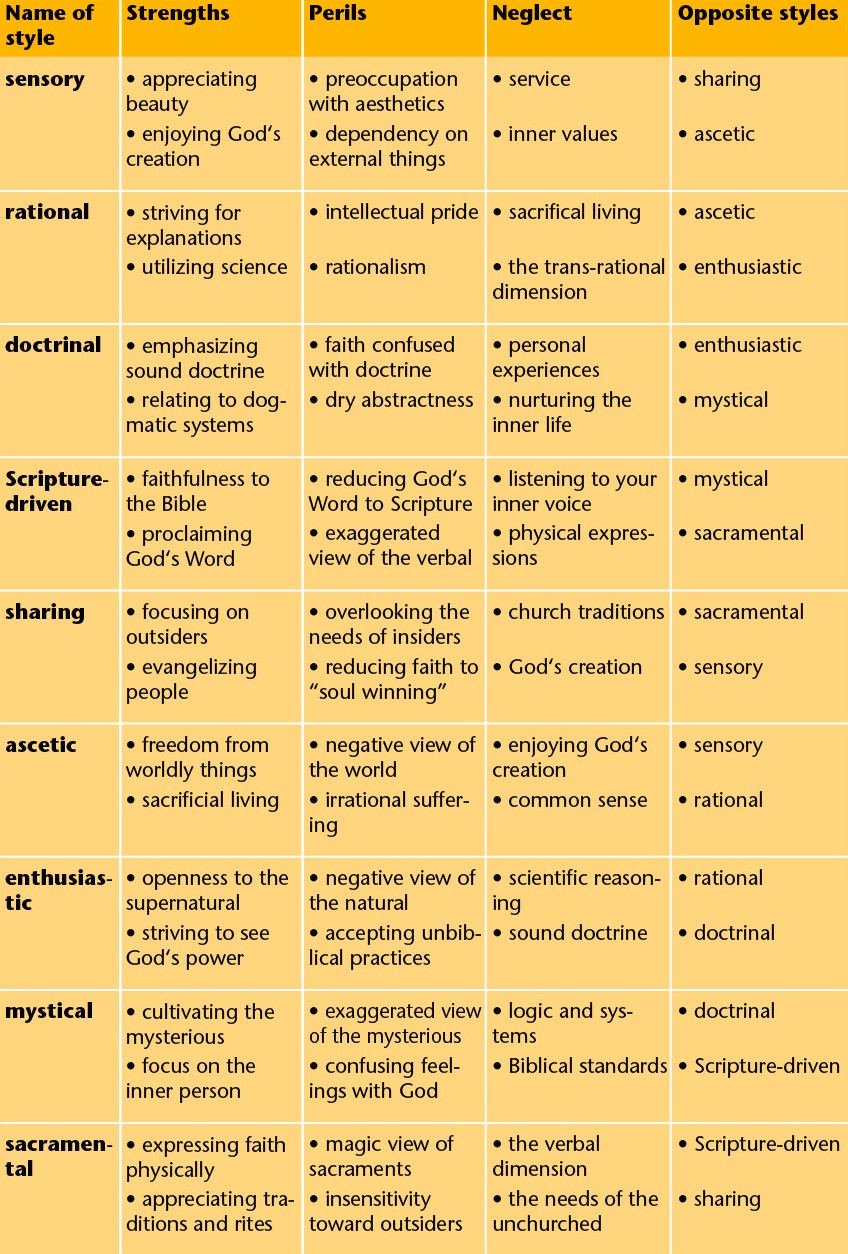O
ur native spiritual style and our dark side are two sides of the same coin. The strength that is expressed through every style is, at the same time, the point at which we are most tempted to sin. One of the most important things we have to learn is that these perils differ from style to style and from person to person:
• The peril of the sensory style is hedonism. Your own positive feelings—experienced through your senses—become so important for you that you have difficulty experiencing God outside of what you consider “beautiful.”
• The peril of the rational style is intellectualism. Only those aspects of God that have successfully passed through the filter of your own logical system of explanation, are approved as valid.
• The peril of the doctrinal style is dogmatism. Faith is largely reduced to your assent to certain doctrines, while personal encounter with God is moved to the background.
• The peril of the Scripture-driven style is biblicism. The written Word is virtually considered God‘s only means of communication; the “book” can almost take the place of God.
• The peril of the sharing style is iconoclasm. Material expressions of faith found in the Christian tradition are exclusively seen as obstacles, rather than aids to faith.
• The peril of the ascetic style is escapism. Since the world is primarily viewed as negative, the tendency is to equate “less world” with a deeper experience of God.
• The peril of the enthusiastic style is emotionalism. There is the danger that openness to the trans-rational dimension of our encounter with God slides into the irrational.
• The peril of the mystical style is spiritualism. What people perceive as “inner voices” can be equated with the “voice of God” without any critical evaluation.
• The peril of the sacramental style is ritualism. The appreciation of physical expressions of spiritual reality can tempt us to mechanically practice outer forms, without inner involvement.
 This graphic highlights the perils of the three color zones and consequently of the spiritual styles that are assigned to them. Each of the three terms mentioned (legalism, subjectivism, relativism) becomes a danger for the respective color segment when that is one’s exclusive focus. The best way to avoid these perils is to integrate the virtues of the other colors into your own approach to God. n.
This graphic highlights the perils of the three color zones and consequently of the spiritual styles that are assigned to them. Each of the three terms mentioned (legalism, subjectivism, relativism) becomes a danger for the respective color segment when that is one’s exclusive focus. The best way to avoid these perils is to integrate the virtues of the other colors into your own approach to God. n.
 The table (left) lists the strengths and perils of each style and reveals how interaction with the opposite styles can help counterbalance your own danger zones..
The table (left) lists the strengths and perils of each style and reveals how interaction with the opposite styles can help counterbalance your own danger zones..
Further topics in the above chapter of the full version of the book
What is sin? - Different definitions of sin - The beam in our own eye - Why we tend to repress our dark sides - How the opposite pole addresses your danger zones - Dangers cannot be avoided - Light and shadow

